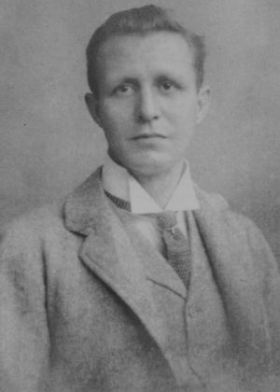|
The History of Moor Pool - A Brief Overview

In 2006, the Estate had its conservation status raised to preserve this unique garden suburb and started its centenary celebrations in 2007, commemorating one hundred years since the first sod cutting by Margaret Nettlefold. The J S Nettlefold documents make reference to Moor Pool or Nettlefold's aims with the Moor Pool Estate. In them he talks about the importance of open space and allotments, all of which would have a beneficial effect on the health of tenants. Mortality rates were dramatically cut, whilst the economic possibilities of building such a community even at inflated land prices and difficult land conditions was proven. Moor Pool was not built purely to house more of the City's population with these improvements as a fortunate side effect. It was built intentionally to prove the physical improvements and that it was a financially viable way forward. Truly Moor Pool was an example of the way ahead and Birmingham should be commended. There are of course many examples of garden suburbs but significantly Moor Pool remains almost complete. The exceptions are open spaces and allotments which have been lost to garaging. There is a valid argument that without these the numbers of motor vehicles would have had a disastrous impact on the Estate's character. Certainly we would not want to see the garages removed, but if there can be a return to amenity areas or allotments for those which have become derelict, this must be the first option. Moor Pool is a tremendous lesson in community design (see English Heritage letter), and better by far than would be built today. It can also be an example of restoration, so that those who follow in the next 100 years can appreciate its intent, almost as Nettlefold intended. |
|
It is fortunately becoming more and more recognised every day that open spaces are as necessary to the health of a town, as streets are to its traffic. The provision of allotments, as a counter-attraction to the public house, could also be arranged for, if only these things were thought of beforehand. Under our present system, these boons to the self-respecting working-man and his wife and children are never thought of until it is too late to provide them at a price within the means of the ratepayers or the rent-payers of our large towns.
John Sutton Nettlefold Practical Housing, 1908, page 10
|

|
|
THE CREATION OF GARDEN SUBURBS Mr. George Cadbury, in dealing with the creation of Garden Suburbs, said: It will be the work of generations to remedy the evils of the past, but we can at once prevent their extension. Tramways are now being constructed in all directions from our great centres of population, in same cases fed by lines of motor vehicles along side streets, and new districts are being opened out where the toilers in our cities and towns will bring up their families. Something must be done at once to protect the great centres of population from those whose aim it is to make money out of the land opened up regardless of the interests of the inhabitants. Once cover this land with dismal, dreary rows of houses, it will be impossible to make a change in the future, and generations of children will be brought up in them without proper air space or playgrounds. Most cities on the Continent have wide streets planted with trees, which even without parks would give space for outdoor life. The houses are not more sanitary than our own, and yet, through having air and space, the inhabitants are physically superior. |